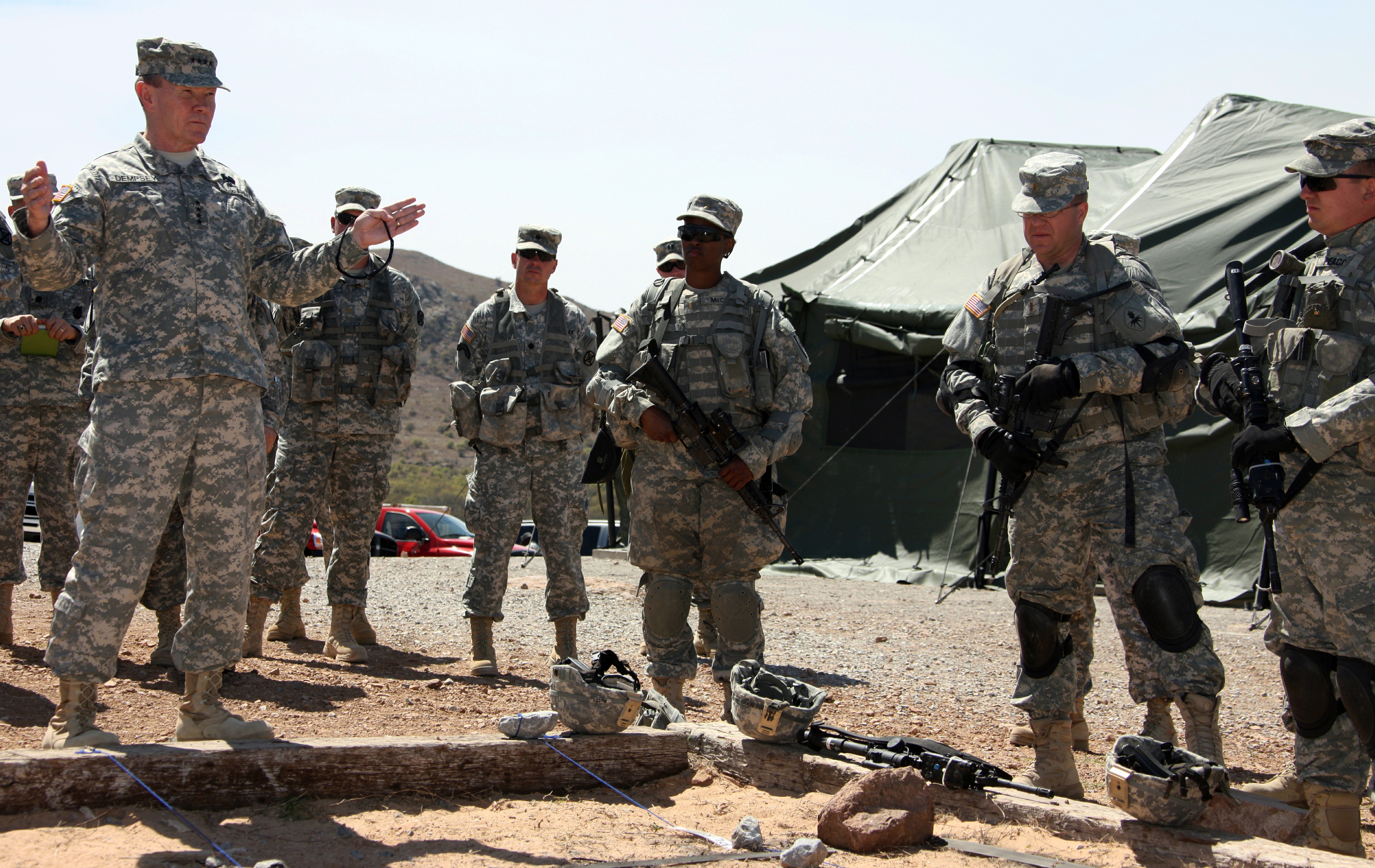
FORT SILL, Okla. (Feb. 11, 2010) -- The Army is changing the way it trains its newest second lieutenants by merging two basic courses and having officers from the same branches train together from the onset of their careers.
The Basic Officer Leadership Course B, or BOLC B, is about to begin at installations Armywide. Field Artillery BOLC B begins Tuesday, when 150 Soldiers start the new training at Fort Sill.
"I think it's a good thing," said BOLC B officer-in-charge Capt. Mike Ernst, of the 1st Battalion, 30th Field Artillery, 428th FA Brigade. "It's refocusing what we need to do at the level for junior officers for initial training. It builds that cohesion factor starting with the basics and graduating to higher-level training."
The 18.5-week BOLC B is a consolidation of the seven-week BOLC Phase II and the 15-week BOLC Phase III, said Maj. Celester Thomas, executive officer of the 1-30th FA.
BOLC II covered 55 Soldier skills, such as land navigation, and its officers were from a variety of branches. Some of those tasks could be better learned at other points in the officers' initial training, said Gen. Martin Dempsey, commanding general of the Training and Doctrine Command at Fort Monroe, Va.
Of the 55 functional skills, some if done once, the Soldiers had the skill down pat, Dempsey said. Other tasks required repetitive learning and still other skills atrophied so quickly that even if learned in BOLC II, would have to be relearned at the officer's first assignment. So now those skills are being spread out over the new officers' training, he said.
Upon graduation from BOLC II Soldiers would go their separate ways on to BOLC III, whose curriculum was branch specific, i.e., field artillery, medical, adjutant general, air defense artillery, etc. (BOLC Phase I is the officer's commissioning source, such as officer candidate school.)
Dempsey said there will be benefits from BOLC B over BOLC II and III.
"It allows us to make better use of resources, and it reduces backlog because we were experiencing some significant (second lieutenant) backlogs," he said.
Ernst provided details on the BOLC B training.
Lieutenants from OCS, ROTC, the U.S. Military Academy, as well as direct commission officers, are first administratively processed into the Army.
"That runs the gamut from getting them into DEERS (Defense Enrollment Eligibility Reporting System), finance, all the medical and dental so that's primarily the first week of the course," Ernst said. "It's just like a private going into basic training who gets a week of in-processing."
Then for the next two weeks, the neophyte officers learn seven core Soldiers skills: land navigation; small arms marksmanship; small-unit tactics, techniques and procedures; convoy operations; sexual assault prevention; equal opportunity training; and lastly combatives, or hand-to-hand fighting.
They are certified as level 1 in the combatives program, a designation similar to a colored-belt system used in some martial arts, said Ernst, who has taught BOLC II for the past 18 months.
The seven Soldier skills will be used and reinforced throughout the 4.5-month program, Thomas said.
On March 8, BOLC B becomes field-artillery specific and the class will pick up Marine Corps and international officers, swelling the number of students to 168, Thomas said.
In a mix of academics and field exercises, 24 instructors will teach the students virtually everything about field artillery.
This includes fire support and coordination, working with maneuver commanders, tactical communications and leadership and platoon operations that will prepare the lieutenants to become company fire direction officers, fire support officers and platoon leaders.
The students will also be introduced to the 105mm howitzer; 155mm Paladin howitzer, which is a tracked vehicle; and the M-777 155mm howitzer, a towed system, Thomas said.
Instruction is primarily on the 105mm howitzer for Soldiers, Thomas said. "If we can teach you on the 105, everything else can translate to the 155."
Academics are rigorous and the officers study, in addition to fire theory and weapons systems, things such as Earth rotation and weather, which can affect the delivery of artillery, Thomas said.
Students must maintain at least a 70-percent academic average throughout the course, except the safety curriculum, where minimum passing is 80 percent, Thomas said.
In BOLC III, one of the toughest parts of the training was the gunnery test, where students had to put rounds on targets designated by a maneuver commander, Thomas said. They were given three opportunities to pass.
"Ninety-nine percent of our failures come from the gunnery exercise," Thomas said. "It's hard for some lieutenants to figure out the technical side of it." A typical BOLC III class would lose 10 to 15 students, who did not pass the course, he said.
BOLC B will culminate with a five-day capstone exercise consisting of everything the students learned, Thomas said.
"Now they are out in the field, it's 'Hey, lieutenant you have the conn, it's your turn to show what you learned throughout the course,'" Thomas said.
Following completion of BOLC B, the new field artillery officers will get further training in the specific weapons system they will use at their next assignments, such as the Multiple Launch Rocket System. For that they will attend a week and a half of advanced officer's training, Thomas said.
The goal of the FA BOLC B is to produce a competent, confident field artilleryman who can advise a maneuver commander, Thomas said. "Those are our three main outcomes."
Thomas and Ernst said they are excited about BOLC B.
"I'm ready to get started," Thomas said.

Social Sharing